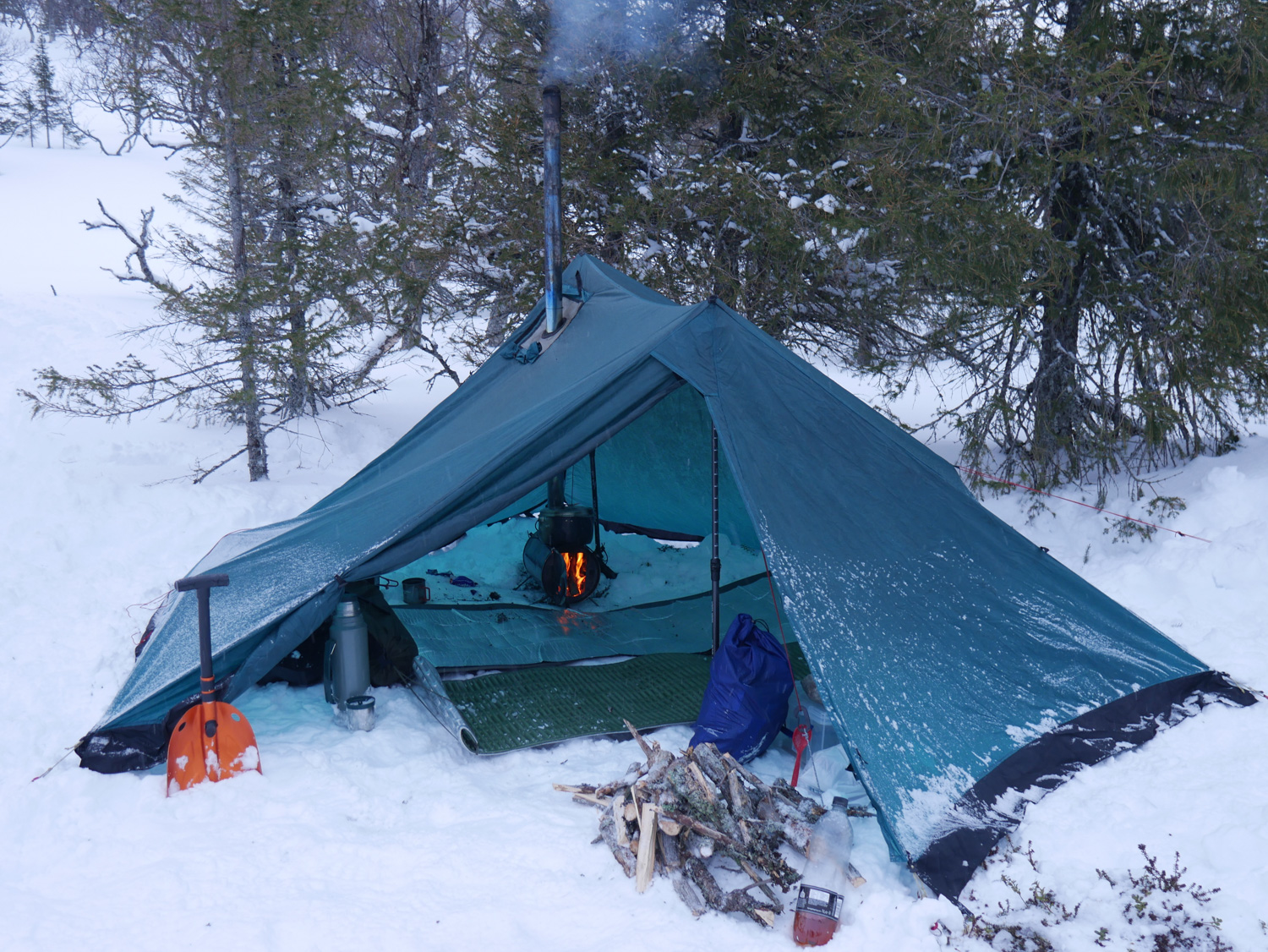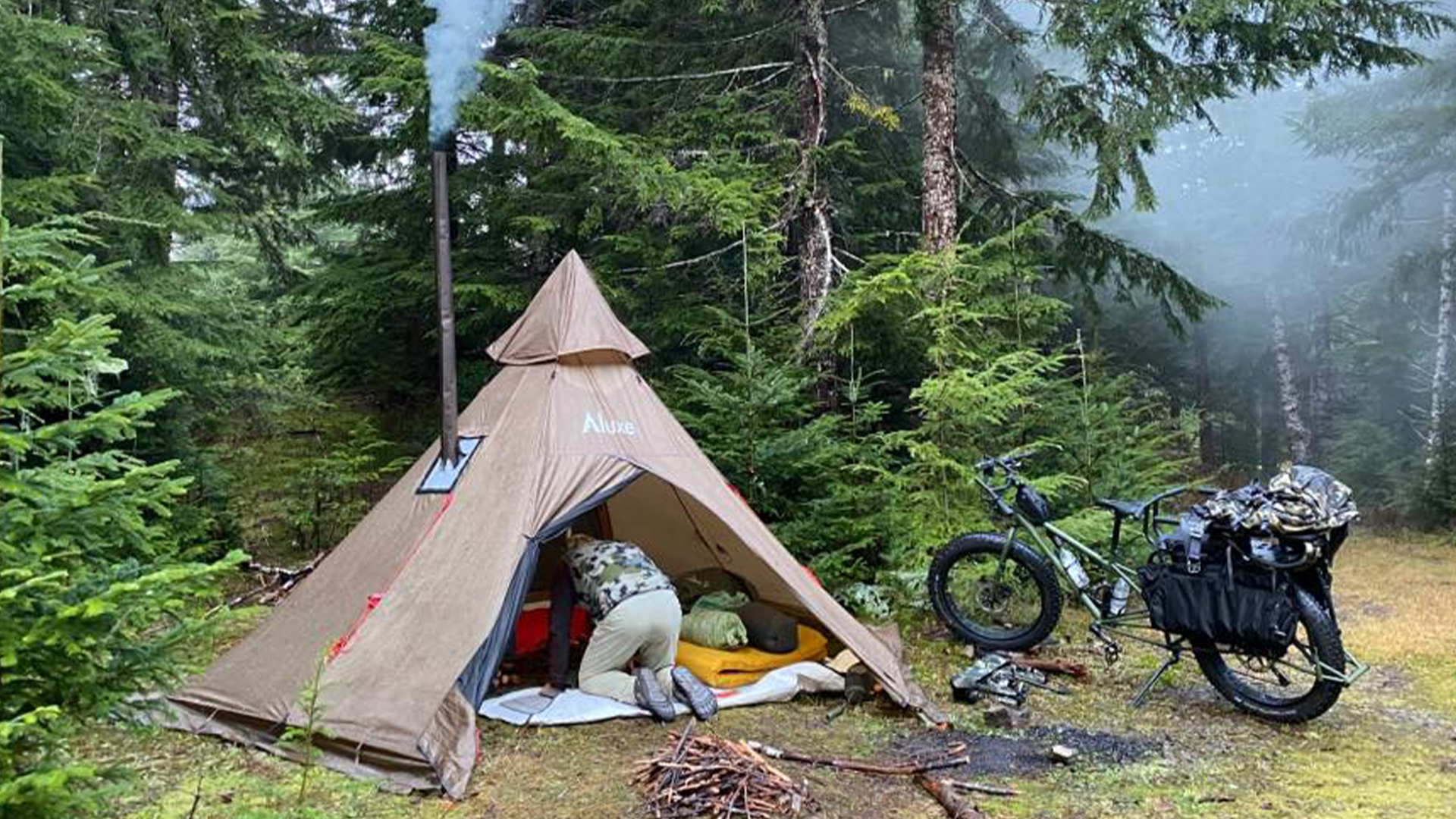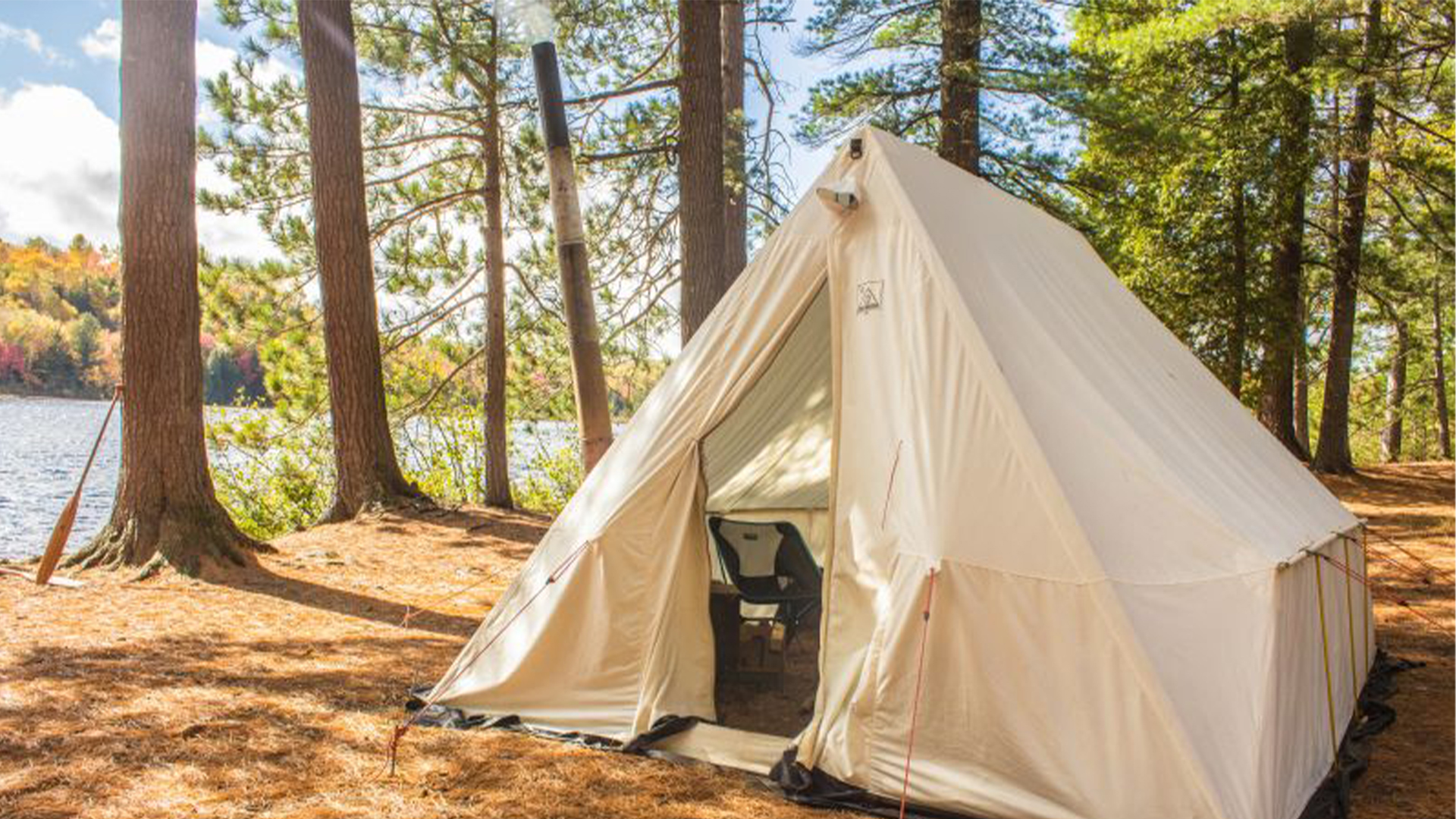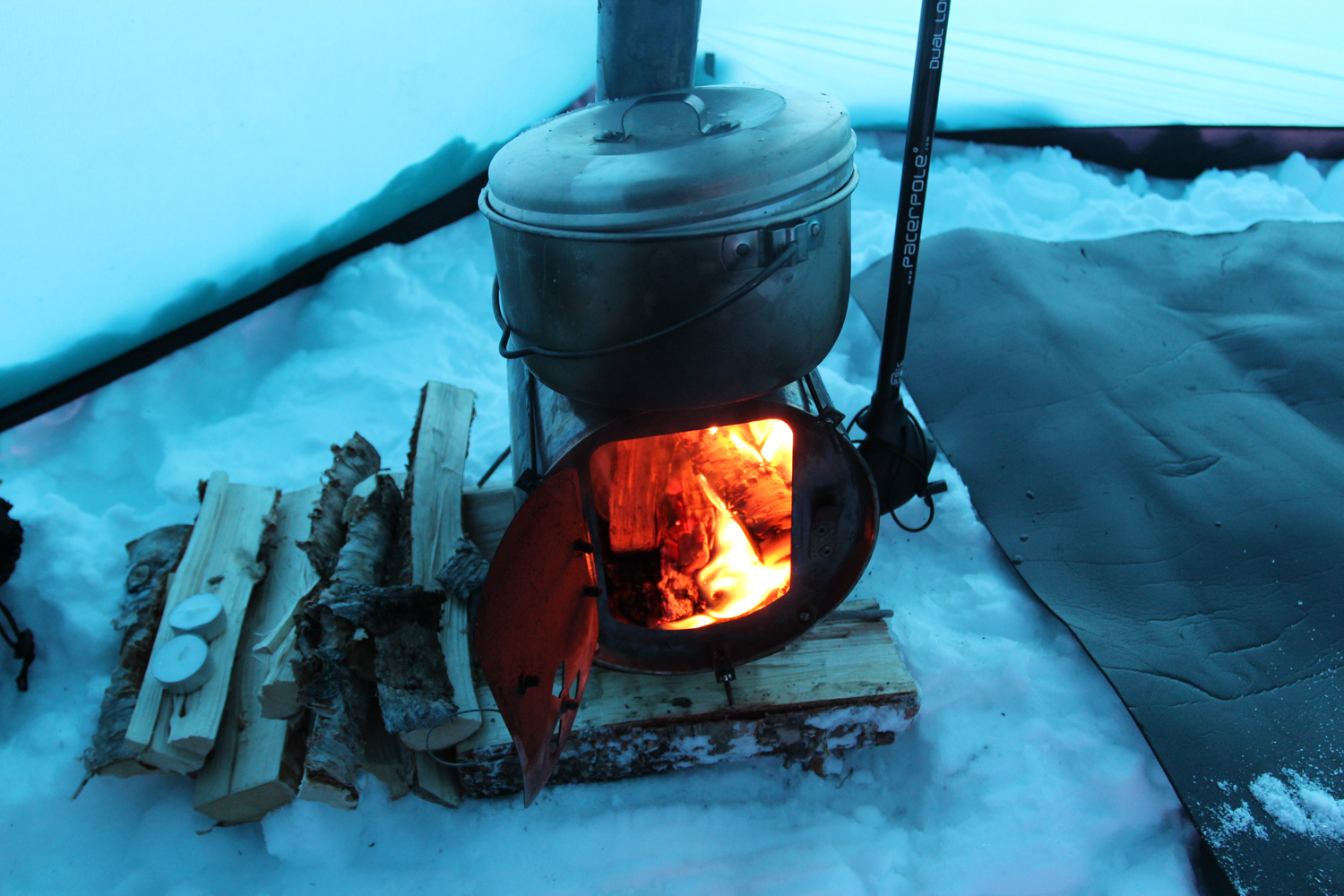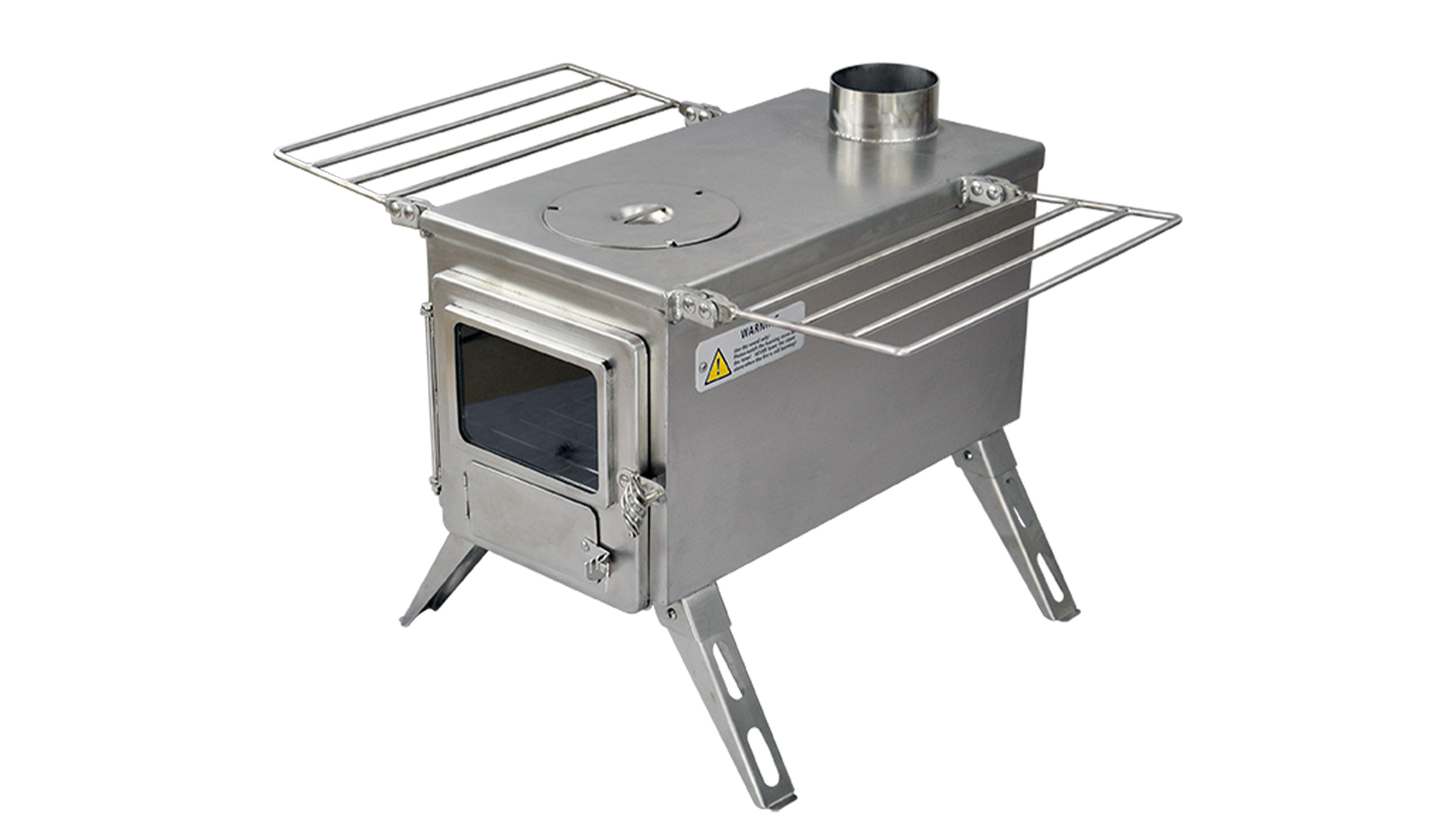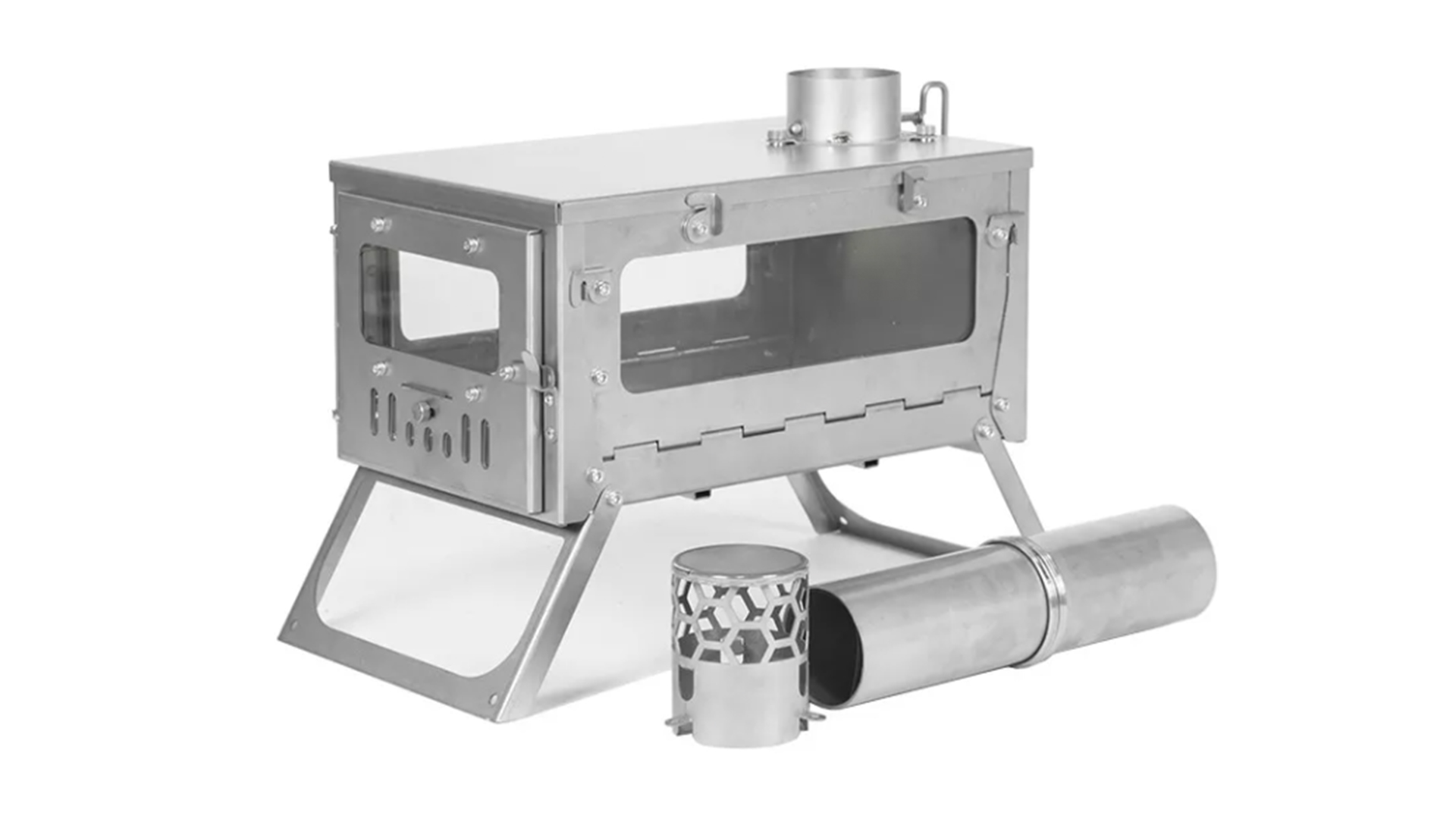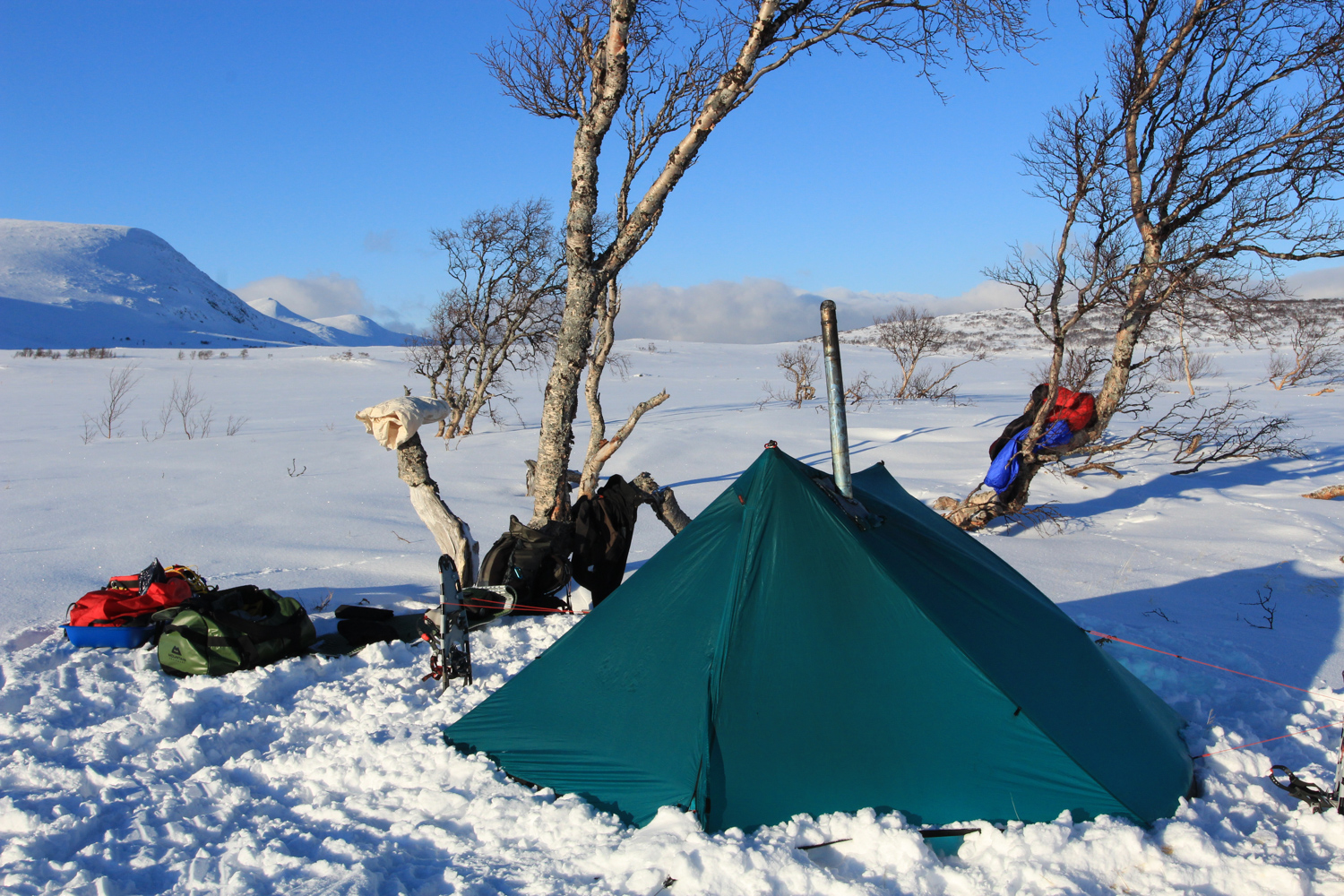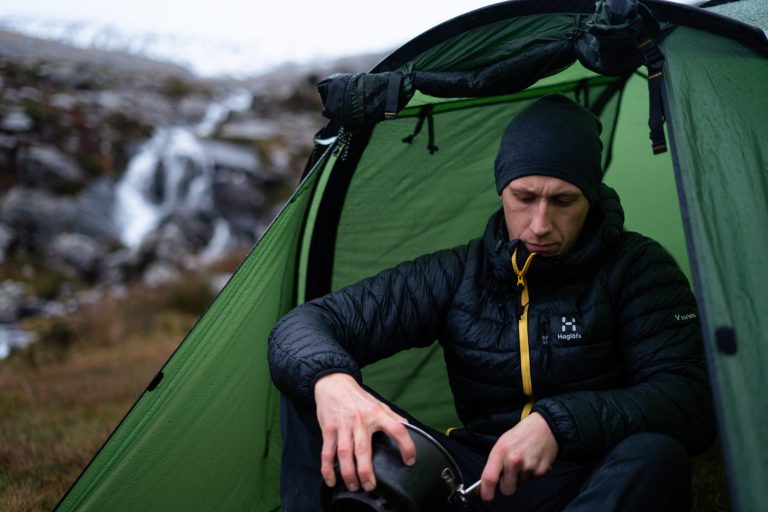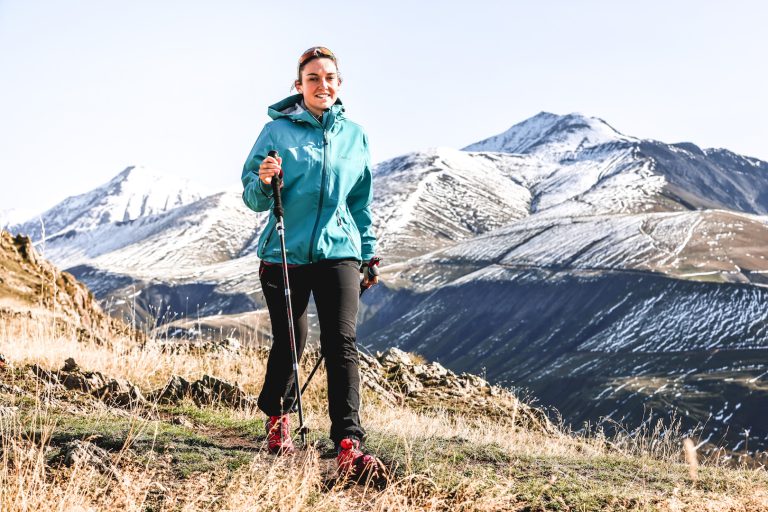It is tempting in winter just to not bother camping. Long winter nights in dark and cold tents might hold just enough seasonal novelty for the odd weekend but multi-day backpacking trips in a freezing damp UK conditions can start to edge recreational adventuring into the realms of expeditioning. The main issue is that in prolonged freezing conditions, traditional mountain tents will tend to collect respired moisture on the surface of the inner and at some point this will lightly snow on you and your gear. As you fight the problem of pervasive damp, slowly creeping into all your gear, you may find its chilly fingers have also made its way into the recesses of your soul – and you could well resolve to wait until spring next year!
There is a way to manage this and to seize the winter months, however. And the answer lies in hot tenting.
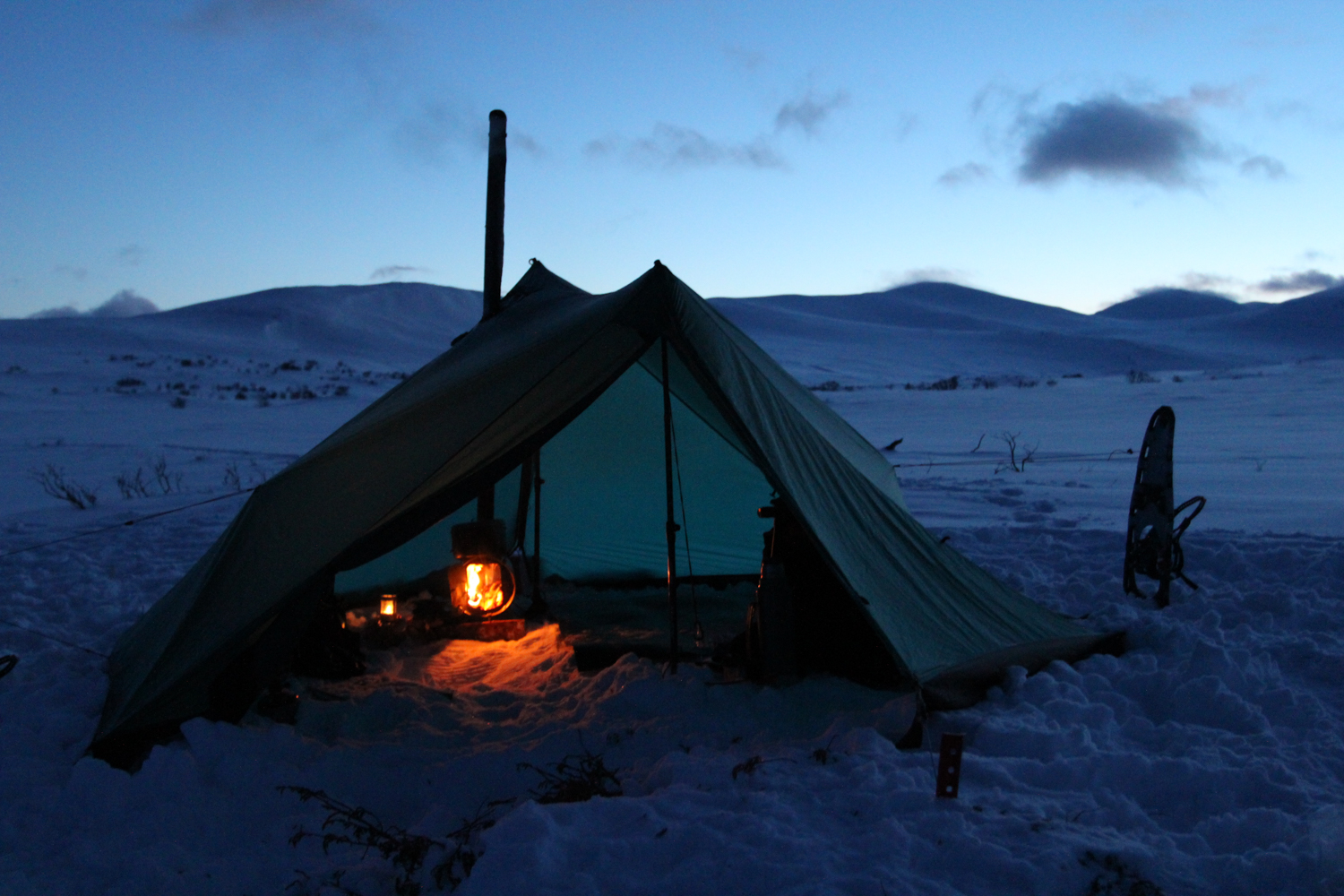
What Is A Hot Tent?
‘Hot Tents’ are shelters designed to accommodate a wood-burning stove. Master living in one of these and the results can be transformative. With the addition of a fire resistant ‘stove jack’ sewn into a tent wall, it is possible to put a stove inside, and run a chimney or stovepipe through the stove jack. With that rig you can burn wood as a heat source, to cook food or even dry clothing.
All this provides some memorable winter experiences. From creeping off British hillsides into the woody abundance of conifer plantations or even undertaking real wilderness expeditions in the frozen boreal forests of the sub-arctic. A properly sited Hot Tent with a ready supply of wood provides a comfortable space in which to cook, eat and relax. What’s more, modern materials from sil-nylon tents to titanium stoves mean that your set-up can be extremely lightweight and portable. With the lightest rigs at around 2kg for both tent and stove there is little weight penalty for being warm and dry.
Building experience with short trips in the UK hills, I have skied and snowshoed for days out in the deep cold of a Scandinavian winter. In temperatures of around – 20 Celsius, your Hot Tent is a cocoon. It is hard work in that level of cold but the satisfaction of the tent up and the stove chugging away as you sit in a heated shelter is so much sweeter for the effort. Moreover, from your hearthside you can enjoy the stillness of winter whilst others are simply sitting at home and waiting for the arrival of spring.


